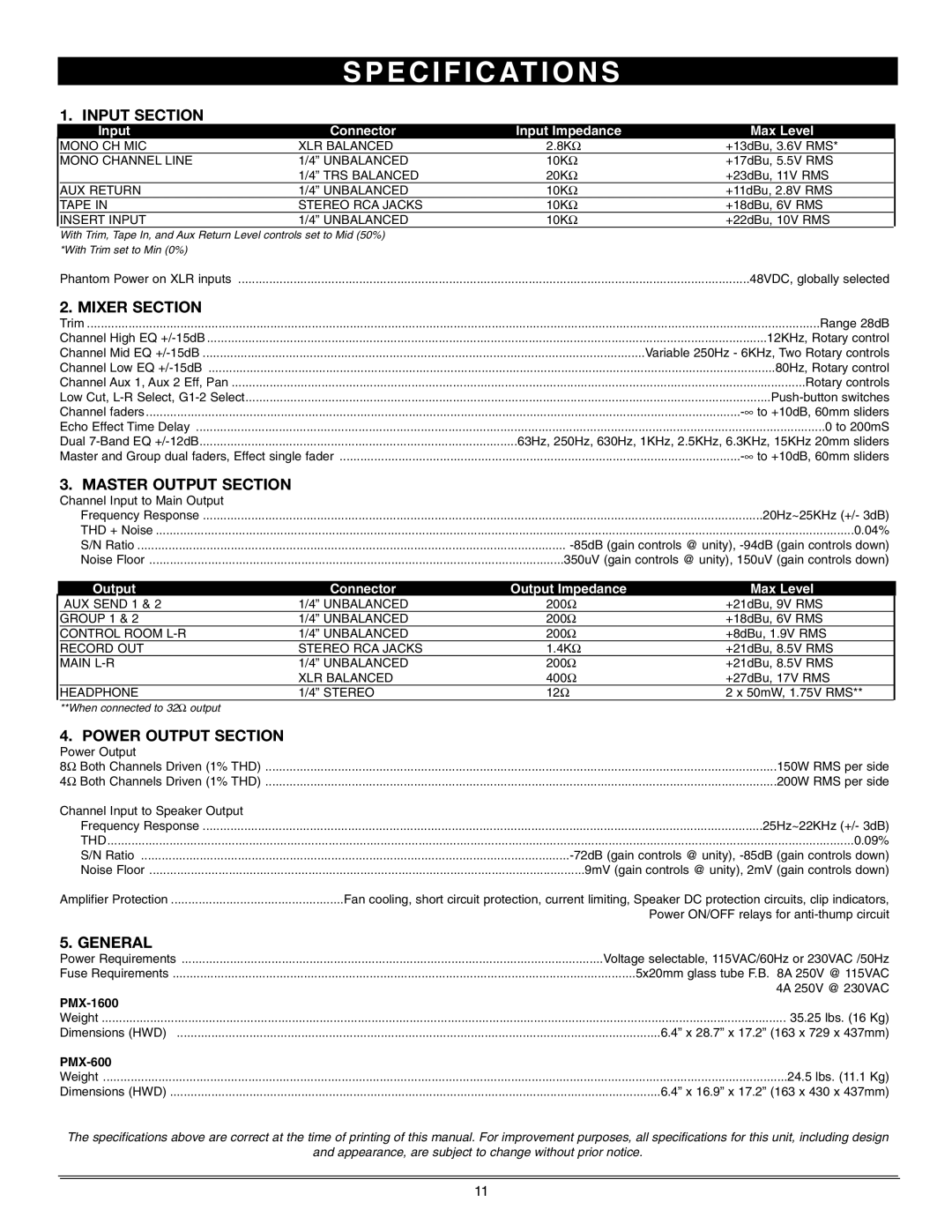PMX-1600 16, PMX-600, PMX-1600, PMX-600 6 specifications
Nady Systems is a renowned name in the audio equipment industry, recognized for its high-quality products designed for musicians, event organizers, and sound engineers. Among their impressive lineup are the PMX-1600 and PMX-600 mixers, which cater to a variety of audio mixing needs.The Nady PMX-1600 is a versatile 16-channel audio mixer that offers an array of features perfect for both live performances and studio applications. One of its standout characteristics is the inclusion of 16 balanced XLR inputs, allowing for the connection of multiple microphones and instruments. This mixer also boasts a 3-band EQ for each channel, enabling precise sound shaping tailored to individual performance requirements.
Equipped with a built-in digital effects processor, the PMX-1600 enhances audio output by providing a multitude of effects options, including reverb, delay, and chorus. This feature is particularly beneficial for live sound environments, allowing users to elevate the performance sound without the need for additional external effects units. Its onboard USB interface adds to its versatility, offering seamless connectivity to computers for recording and playback, making it an ideal choice for both stage performances and studio settings.
On the other hand, the Nady PMX-600 is a compact 6-channel mixer designed for smaller setups without compromising on sound quality. The PMX-600 includes several balanced inputs and a simple, user-friendly layout. Its built-in effects and 3-band EQs allow for effective sound customization, perfect for solo musicians or small bands.
Both mixers utilize advanced audio technologies that minimize signal loss and maximize sound clarity. Nady Systems has integrated high-performance components to ensure durability and reliability during extensive use, typically encountered in live sound applications.
The ergonomic design of the PMX mixers offers easy access to controls, making them suitable for users of all skill levels. These mixers are also designed with portability in mind, allowing for easy transport to gigs or events. With robust construction, they withstand the rigors of touring and daily usage.
In summary, the Nady PMX-1600 and PMX-600 mixers combine advanced technology, user-friendly design, and practical features to meet the audio needs of various users. Whether for a solo performer or a full band, these mixers deliver exceptional sound quality and flexibility, making them an excellent choice for any audio application.

